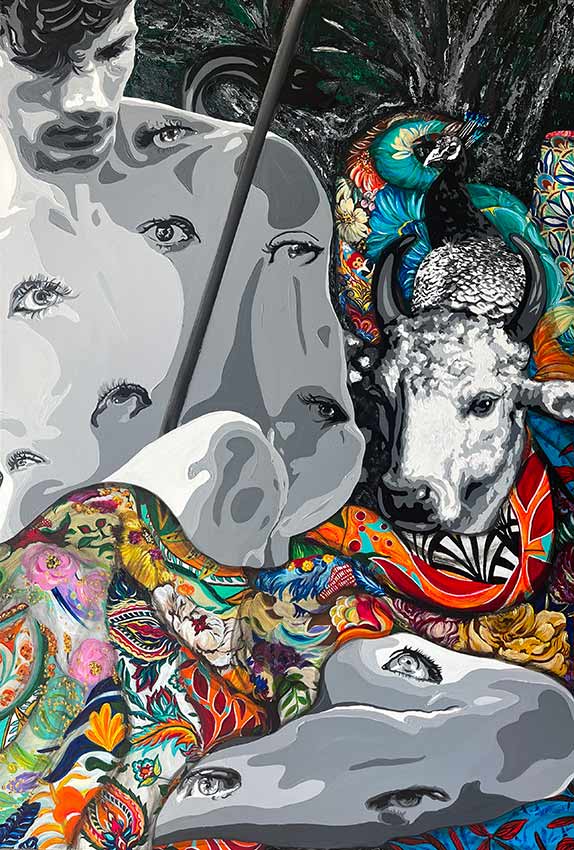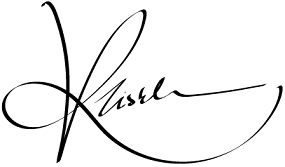Argus The Giant with 100 Eyes
ACRYLIC ON CANVAS 120X800CM
Renowned for his multitude of eyes, Argus the all seeing one, is a symbol of ever-watchful vigilance and omnipresence. His imposing figure, a mosaic of eyes, dominates the canvas, each eye a witness to the world’s truths and secrets. This representation speaks to the theme of constant awareness and the power of observation.
To Argus’s left, we see Io, once a nymph, now tragically transformed into a white cow. Bound to an olive tree, she is a poignant embodiment of innocence ensnared by forces beyond her control. Her situation symbolizes the struggles and transformations women endure, often shaped by the whims and demands of greater powers.
In the backdrop, the presence of a peacock, a bird sacred to Hera, adds another layer of meaning. This bird is not merely a creature of beauty but also a symbol of the goddess who orchestrated Io’s plight. Its inclusion is a subtle nod to Hera’s invisible hand in this narrative, a representation of the divine and often capricious forces that influence mortal lives.
The stark black and white silhouettes of these figures, set against the vibrant cloth of colors and patterns, create a striking contrast. This juxtaposition is intentional, illustrating the complexity of the myth and the interwoven nature of fate, jealousy, power, and transformation. The colorful patterns enveloping the scene are reminiscent of the unpredictable tapestry of life, where beauty and pain, freedom and captivity, divine and mortal are inextricably linked.
Argus The Giant with 100 Eyes
ACRYLIC ON CANVAS 120X80 CM
Renowned for his multitude of eyes, Argus the all seeing one, is a symbol of ever-watchful vigilance and omnipresence. His imposing figure, a mosaic of eyes, dominates the canvas, each eye a witness to the world’s truths and secrets. This representation speaks to the theme of constant awareness and the power of observation.
To Argus’s left, we see Io, once a nymph, now tragically transformed into a white cow. Bound to an olive tree, she is a poignant embodiment of innocence ensnared by forces beyond her control. Her situation symbolizes the struggles and transformations women endure, often shaped by the whims and demands of greater powers.
In the backdrop, the presence of a peacock, a bird sacred to Hera, adds another layer of meaning. This bird is not merely a creature of beauty but also a symbol of the goddess who orchestrated Io’s plight. Its inclusion is a subtle nod to Hera’s invisible hand in this narrative, a representation of the divine and often capricious forces that influence mortal lives.
The stark black and white silhouettes of these figures, set against the vibrant cloth of colors and patterns, create a striking contrast. This juxtaposition is intentional, illustrating the complexity of the myth and the interwoven nature of fate, jealousy, power, and transformation. The colorful patterns enveloping the scene are reminiscent of the unpredictable tapestry of life, where beauty and pain, freedom and captivity, divine and mortal are inextricably linked.



